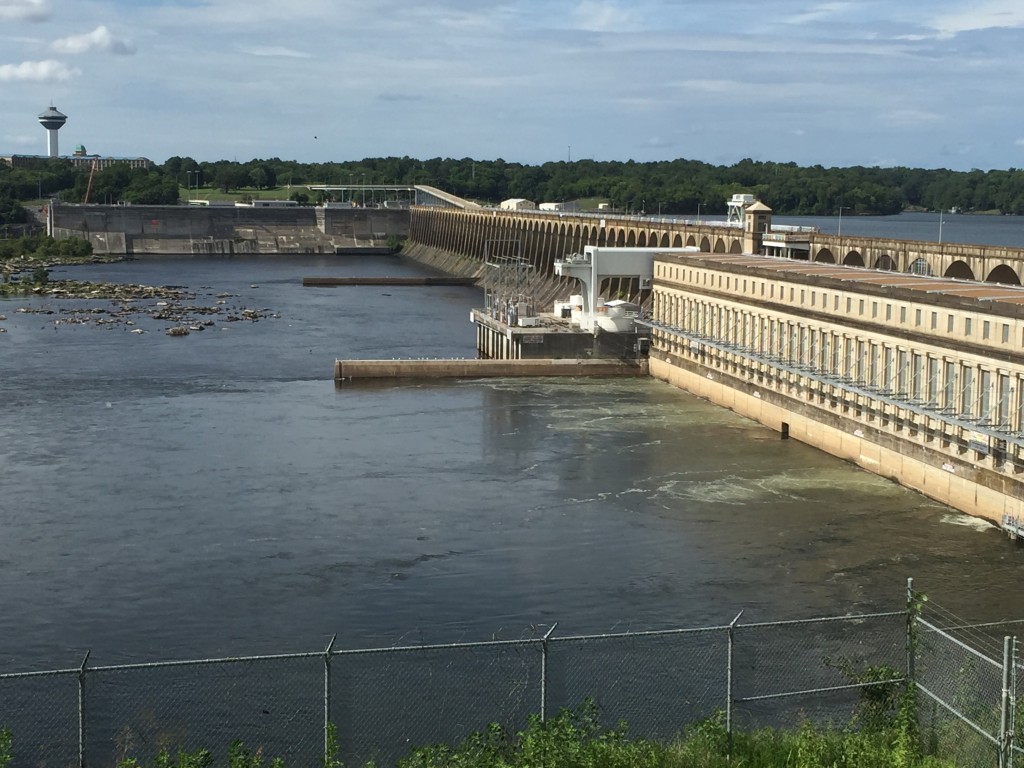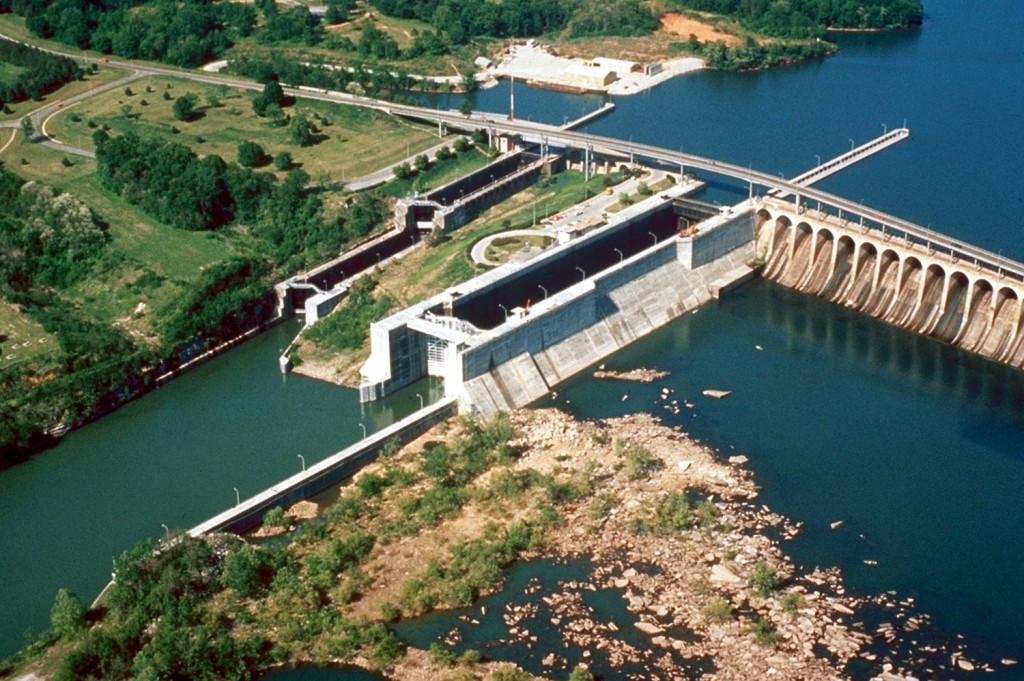This blog has been quiet in August so far, largely because I’ve been away for two weeks in the United States. Visiting friends in Alabama, to be precise (where, yes, it is a tad hot at this time of year). For one day-trip, we visited Florence, Alabama — which doesn’t look much like the one in Tuscany — where I marvelled at a piece of water engineering that utterly dwarfs anything in the Aire valley…
This is me at Wilson Dam, historically the first of a whole series of massive structures to be built across the width of the Tennessee River… which winds its 652-mile journey through Tennessee, Alabama, Tennessee again, and finally Kentucky, where it intersects with the Ohio River… which then shortly thereafter flows into the mighty Mississippi, which then heads down to the Gulf of Mexico. So it’s kind of like the Aire, flowing into the Ouse, which then quickly flows into the Humber. Except it isn’t, because the scale of everything is *massively* bigger.
If you thought the controversy about Saltaire weir’s proposed hydro-electric installation was heated (check out previous posts under the “Saltaire Hydro” tab on this blog — although that scheme seems now to have drifted off into the long grass of oblivion), then imagine the local tensions that would have been caused by damming the entire width of the Tennessee in order to generate power back in the 1930s. In the process, of course, the constructors flooded the entire valley upstream of the dam — with incalculable effects on local wildlife habitats as well as human settlements.
Nowadays the official view on such mega-dams is generally negative, because of the adverse environmental impacts (notwithstanding the pressing argument for finding renewable energy supplies). But the arguments for dams in the Tennessee Valley are complex. The land was notoriously infertile, partly because it was so often subject to destructive floods that swept away sun-dried topsoil. So by harnessing the power of the river through a planned series of staggered dams, the idea was also that it would be contained and controlled better — creating reservoirs from which irrigation systems could be channelled to create more fertile farmland. The TVA system, as it is known (Tennessee Valley Authority) was developed in the 1930s as a cornerstone of the Roosevelt administration’s “New Deal” approach to tackling the Great Depression… massive amounts of federal money went into a building programme that no private company would ever have ventured, providing fiscal stimulus to the wider economy of the depressed Southern states (as people were put to work on the scheme). It was the very opposite of the austerity politics we’ve become used to in recent years in the UK.
 Wilson Dam was centrepiece of the TVA system — both predating and inspiring the rest of it. (This one actually began as a World War I-era scheme, and is named after then-President Woodrow Wilson). Now a National Historic Landmark, the dam is viewed here from the South bank of the Tennessee – from Muscle Shoals (a town central to the history of popular music in the US, because of its recording studios). In the foreground is the section of the dam in which hydro-electric power turbines are still driven by the flow of water from the upper river. You can see the churn of water re-entering the river below. There are massive power-plant buildings on this side of the river, close to where this picture was taken.
Wilson Dam was centrepiece of the TVA system — both predating and inspiring the rest of it. (This one actually began as a World War I-era scheme, and is named after then-President Woodrow Wilson). Now a National Historic Landmark, the dam is viewed here from the South bank of the Tennessee – from Muscle Shoals (a town central to the history of popular music in the US, because of its recording studios). In the foreground is the section of the dam in which hydro-electric power turbines are still driven by the flow of water from the upper river. You can see the churn of water re-entering the river below. There are massive power-plant buildings on this side of the river, close to where this picture was taken.
Beyond that first section is the widest bit of the dam, which is basically just a long containing wall. Then at the far side, you can see a concrete construction jutting out from the dam. This is Wilson Lock — a huge lock big enough to raise and lower not just boats but full-scale ships. In fact, as you can see from the image below, the lock is actually two separate lock systems — a smaller, two-rise system to the north, and then the huge single chamber system. Certainly puts the Bingley Five Rise into perspective…


